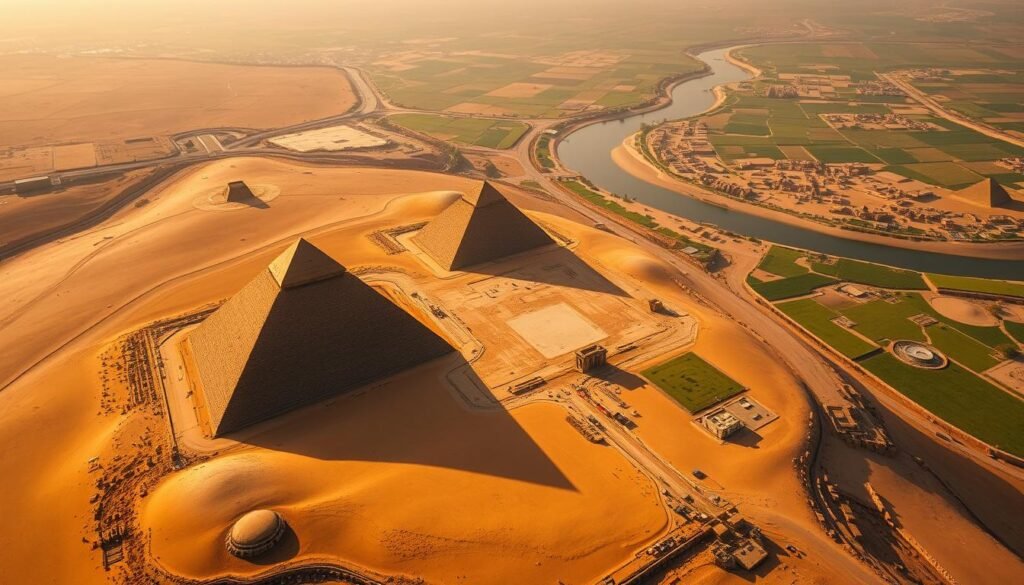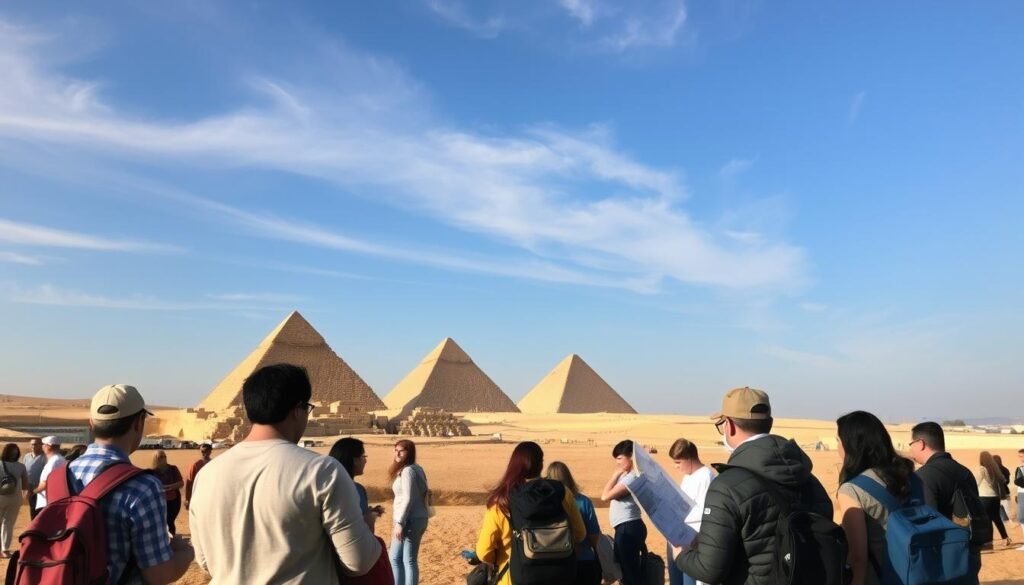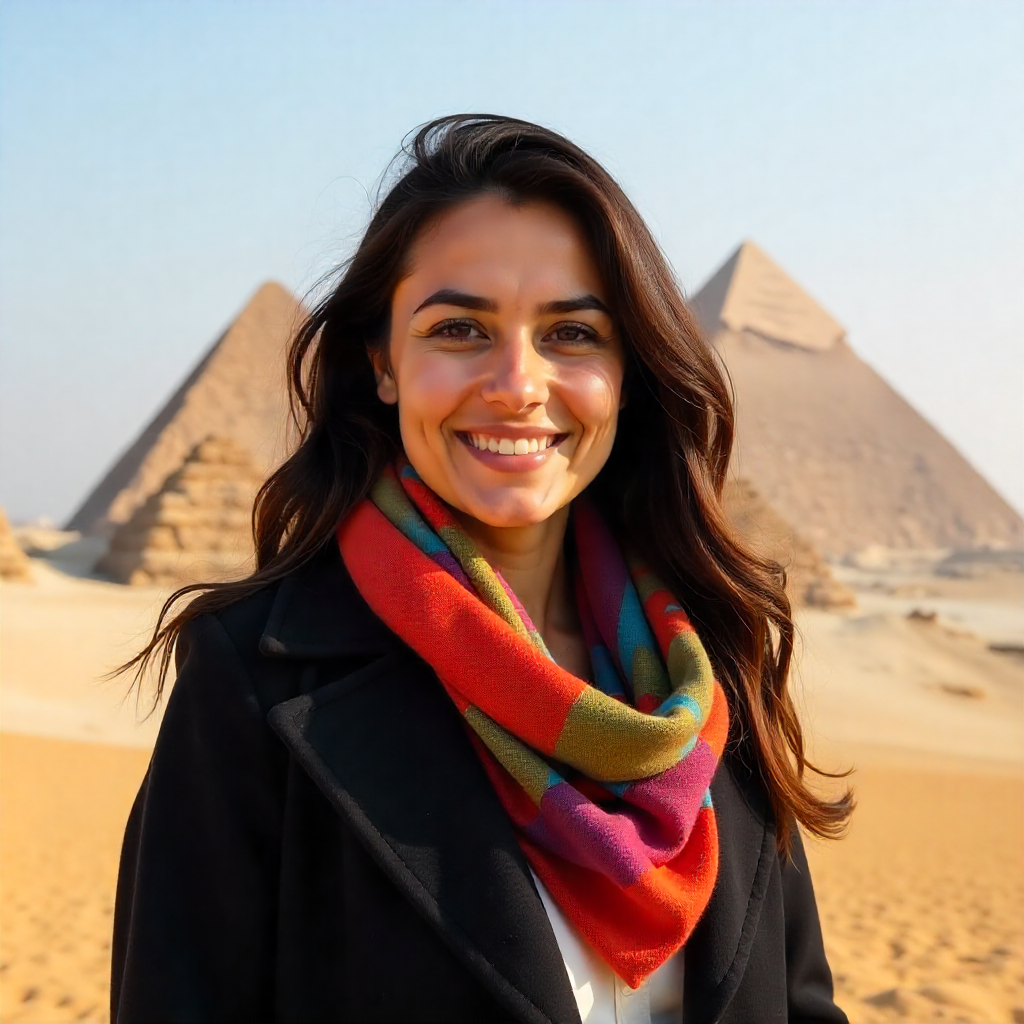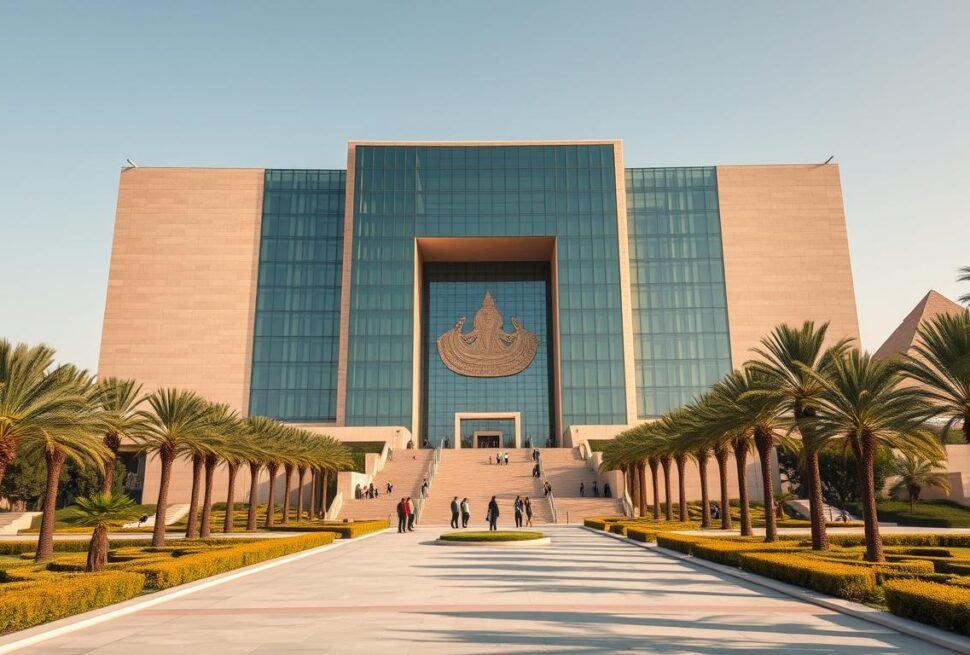Ready to stand where ancient engineering meets modern life? What will surprise you most when you arrive: the scale, the crowds, or how close this marvel sits to a bustling city?
This guide gives a clear, friendly intro to a real on-site experience. Expect concise history about Khufu’s massive project and how millions of stone blocks shaped a lasting landmark over thousands of years.
We map out how the giza plateau fits together — three main structures, the Sphinx, boat pits, temples, and causeways — so your visit feels calm and planned.
Inside the largest pyramid, passages are tight and warm and lead to the King’s Chamber with an empty sarcophagus. Camera rules vary; note a small tripod fee at entry and phone photos are usually fine.
Key Takeaways
- Prepare for a bucket-list place that sits on the edge of a lively city.
- Know key viewpoints: Sphinx forecourt, Panoramic Point, helicopter pad, and dunes south of Menkaure.
- Decide in advance if you want to enter the interior tunnels; they are steep and narrow.
- Plan gear and fees: phone photos OK, DSLR rules can change, tripod fee applies.
- For smooth booking and guided days, email Booking@blackcameltours.com or call +43 660 9081449 or +20 108 073 3101.
Giza Plateau at a Glance: History, Scale, and Why It Still Wows
A walk across this plateau is a short course in planning, logistics, and ritual. Khufu started the great pyramid around 2550 B.C., rising to about 481 ft (147 m) with roughly 2.3 million blocks. That single fact explains the scale you see at once: huge stones, exact fits, and a skyline set by human effort over years.
Meet the three pyramids: Khufu’s colossal work, Khafre’s paired complex with the Sphinx, and Menkaure’s smaller, elegant pyramid with queens’ satellites and a long causeway. Materials moved along Nile canals — granite from Aswan, cedar from Lebanon, copper from Sinai — using barges and sledges.
Inside the complex, mortuary temples, boat pits, and causeways link tombs with valley temples. Reliefs and tomb art show ancient egyptian life: farming, crafts, and rituals. Modern scans, like ScanPyramids, reveal internal voids and corridors that hint at construction choices and clever stress-relief systems.
| Pyramid | Approx. Original Height | Key Features | Materials Sourced |
|---|---|---|---|
| Khufu | 481 ft / 147 m | Largest; internal chambers; ~2.3M blocks | Limestone casing, Aswan granite |
| Khafre | About 448 ft | Includes Sphinx; well-preserved platform | Limestone, local stone |
| Menkaure | About 218 ft | Smaller scale; queens’ pyramids; long causeway | Mixed stones, some granite |
Want a guided history walk? For custom tours and guided visits, email Booking@blackcameltours.com or call +43 660 9081449 | +20 108 073 3101 or visit blackcameltours.com.
Navigating the Giza Plateau Today: Entrances, Layout, and Flow
A smart entry choice saves time and energy, especially when you have a short window to see key spots. Two main entrances serve the site: one near the Great Pyramid and one beside the Sphinx. Pick the entrance that matches your goals to reduce walking and confusion.
Main gates and quick routing
Main gates and routes
Choose the Great Pyramid entrance for immediate access to Khufu’s area. Choose the Sphinx side to get classic portraits and a smoother path around Khafre’s valley temple.

On-the-ground reality
Expect a bustling arrival scene with people offering rides, snacks, and unofficial guides. A firm, polite “no” works well. Tripods require an extra ~20 EGP paid at the entrance.
Best visiting hours vary: Oct–Mar roughly 8 am–5 pm, Apr–Sep roughly 7 am–7 pm. Fridays and Saturdays are busier weekends, so midweek mornings are quieter.
| Starting Gate | Best For | Typical Delay | Transport Tip |
|---|---|---|---|
| Great Pyramid entrance | Direct Khufu access, internal tickets | 5–15 minutes for security/tickets | Arrive by Uber/taxi to save walking |
| Sphinx side | Classic portraits, easy flow to Khafre | 10–20 minutes near busy weekends | Negotiate camel/carriage fares up front |
| Panoramic Point (outlying) | Sunset views, fewer crowds | Short drive; adds 10–15 minutes | Book transport or tour to save time |
Hydrate, carry small bills for tips, and keep tickets on you. The plateau sits on the edge of the city, so short drives link viewpoints and cut down walking minutes. Need a smooth, door-to-door plan? Email Booking@blackcameltours.com or call +43 660 9081449 / +20 108 073 3101. Book at blackcameltours.com.
The Great Pyramids of Giza: Beyond the Photos
Entering an interior passage changes the visit from sightseeing to a hands-on, breath-by-breath journey into ancient engineering.
Tickets and choices. Interior access needs a separate ticket, and the great pyramid usually costs more. Decide in advance which interior you want: the headline great pyramid, or a smaller pyramid for fewer crowds and an easier climb.
What the climb feels like. Expect a real physical tunnel climb. You will stoop through narrow shafts and climb steep ramps with low ceilings. Air can feel warm and somewhat humid. If you are claustrophobic or have knee/back issues, it is fine to enjoy the outside views instead.
Comfort, rules, and the chamber
The burial chamber is plain: worn stone and an empty sarcophagus built thousands of years ago. Phones are allowed for photos; DSLR rules vary, so confirm with your guide at the gate.
- Time your entry early to avoid heat and long queues.
- Wear breathable clothing and use handrails where present.
- After one interior visit, know that others feel similar inside—consider exploring temples, boat pits, and viewpoints instead.
Want interior tickets and a patient, knowledgeable guide? Write to Booking@blackcameltours.com or call +43 660 9081449 / +20 108 073 3101. Info: blackcameltours.com.
Best Views and Photo Spots on the Giza Plateau
A short loop across key viewpoints gives you both iconic frames and quiet moments away from crowds.
In front of the Sphinx is a large sandy area ideal for portraits. The viewing platform gives tight, classic profiles at sunset. This spot stacks a pyramid with the Sphinx for an instant postcard shot.
Panoramic Point and helicopter pad
Park nearby and walk two minutes to a low hill for a cleaner skyline. The helicopter pad is an open, quiet place to experiment with wide angles and layered composition.
Dunes south of Menkaure
For a desert panorama you can see an extended sweep of nine structures at once. Sand footing can be tricky; protect gear and consider a short camel ride if you want deeper stretches.
After dark: Sound and Light Show viewpoints
The show runs nightly; some terraces in nearby hotels let you watch from above the edge of the city. If you prefer a quieter scene, rooftop views often outshine the narration.
Quick tips: tripods cost an extra 20 EGP at entry, and timing your loop to reach Panoramic Point for golden hour works best.
| Spot | Best Time | Why Visit | Notes |
|---|---|---|---|
| Sphinx forecourt | Sunset | Classic portraits; tight frames | Large sandy area; platform shots |
| Panoramic Point / Helicopter pad | Golden hour | Cleaner skyline; fewer crowds | Two-minute hill walk; parking nearby |
| Dunes south of Menkaure | Sunrise or sunset | Wide desert panorama | Protect gear from sand; camels optional |
Need a driver who knows every angle (including a two-minute hill walk)? Contact Booking@blackcameltours.com | +43 660 9081449 | +20 108 073 3101 | blackcameltours.com.
Plan Your Visit: Tickets, Timing, Transport, and Responsible Choices
Smart planning turns a crowded visit into a calm, efficient experience with better light and fewer waits.
Current prices & hours (2025): Plateau entrance 700 EGP for adults, 350 EGP for students with ID. Great Pyramid interior 900 EGP; Menkaure interior 280 EGP. Usual hours: roughly 8 am–5 pm (Oct–Mar) and 7 am–7 pm (Apr–Sep). Tripod fee ~20 EGP at entrance.

Getting there and around
Use Uber or a taxi for direct drops. Guided tours save time and handle tickets. Panoramic Point is easiest by vehicle; some dunes routes require a camel or carriage plus a short two-minute hill walk.
Ethical animal use and safety
Negotiate fare, confirm duration, and pick operators whose animals look healthy. Never climb pyramids, avoid drones without permits, and keep ticket and photo permissions handy.
- Budget: include gate, interior tickets, and small extras like tripod fees.
- Timing: start early on weekdays to avoid heavy weekend crowds and midday heat.
- Pack: water, sun protection, comfy shoes, and a light layer for cool city breezes.
Want us to arrange tickets, transport, and an ethical animal operator? Email Booking@blackcameltours.com | +43 660 9081449 | +20 108 073 3101 | blackcameltours.com.
Where to Stay with Pyramid Views
Wake to a skyline that pairs hotel balconies with ancient stone silhouettes. For a few guests, morning coffee becomes a memory when monuments sit just beyond a glass railing.
Iconic stays: Marriott Mena House and waking up to Khufu’s sightline
Marriott Mena House sits at the base of the plateau and offers gardens, breakfast, and balconies facing the monuments. This luxury hotel is ideal for a relaxed arrival and a short stroll to gate entry.
Terrace-view inns by the Sphinx: Pyramids View Inn and Great Pyramid Inn
Pyramids View Inn and Great Pyramid Inn have rooftop terraces with sweeping urban and monument panoramas. Guests often watch the Sound and Light show from terrace space without buying extra tickets.
- Book Marriott Mena House for a luxury stay and doorstep access to Khufu’s area.
- Choose terrace inns for sunset views and easy rooftop photos.
- Staying near the giza plateau saves city travel time and opens soft-light windows for better shots.
- Ask for high-floor or balcony rooms; not every room guarantees a direct line of sight.
For handpicked rooms, transfers, and timed wake-up calls for sunrise starts, contact Booking@blackcameltours.com | +43 660 9081449 | +20 108 073 3101 | blackcameltours.com.
Conclusion
Finish your day with a clear sense that this complex links pyramids, temples, and village life into one walkable landscape. ,
Khufu’s great pyramid still speaks to scale: original height near 481 ft and millions of blocks moved across years. Walk causeways, pause at mortuary temples, and watch how tomb reliefs tell ancient egyptian stories.
Expect modern bustle at the plateau edge, then find quiet desert viewpoints for wide views. ScanPyramids research and visible tunnels add fresh context to construction choices.
Ready to turn plans into reality? Email Booking@blackcameltours.com, call +43 660 9081449 or +20 108 073 3101, or book at blackcameltours.com for tickets, drivers, and rooms with view.







